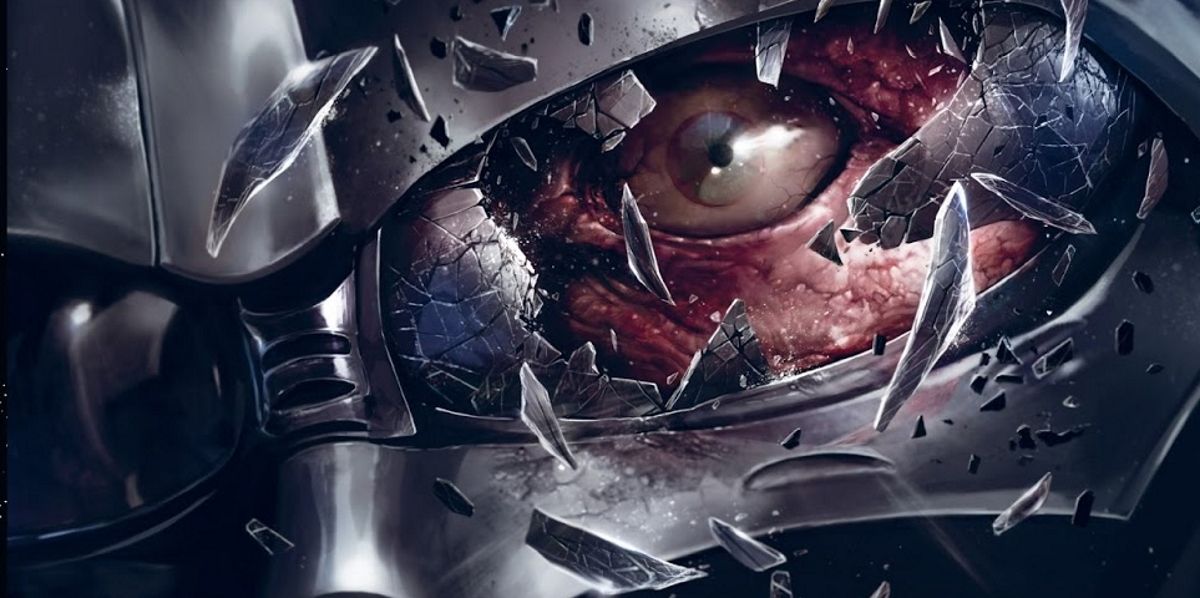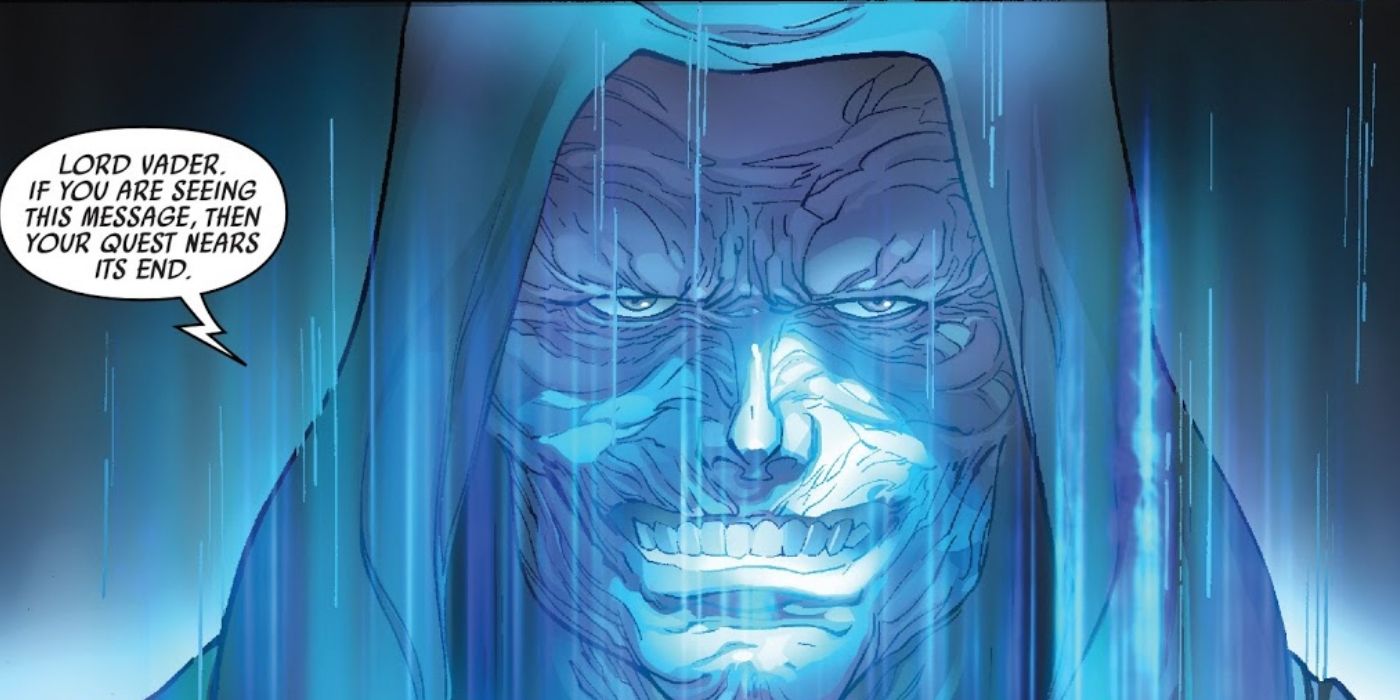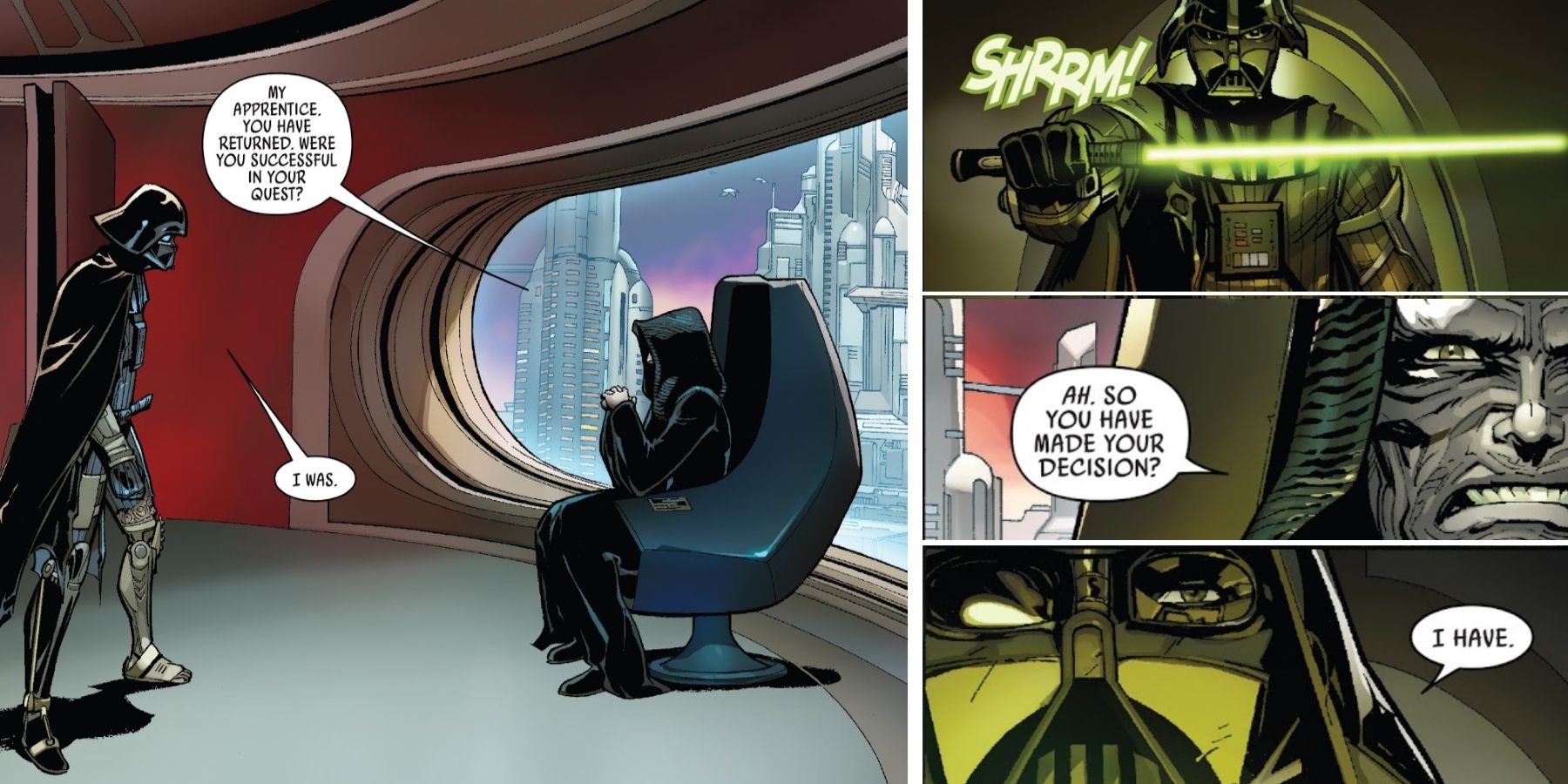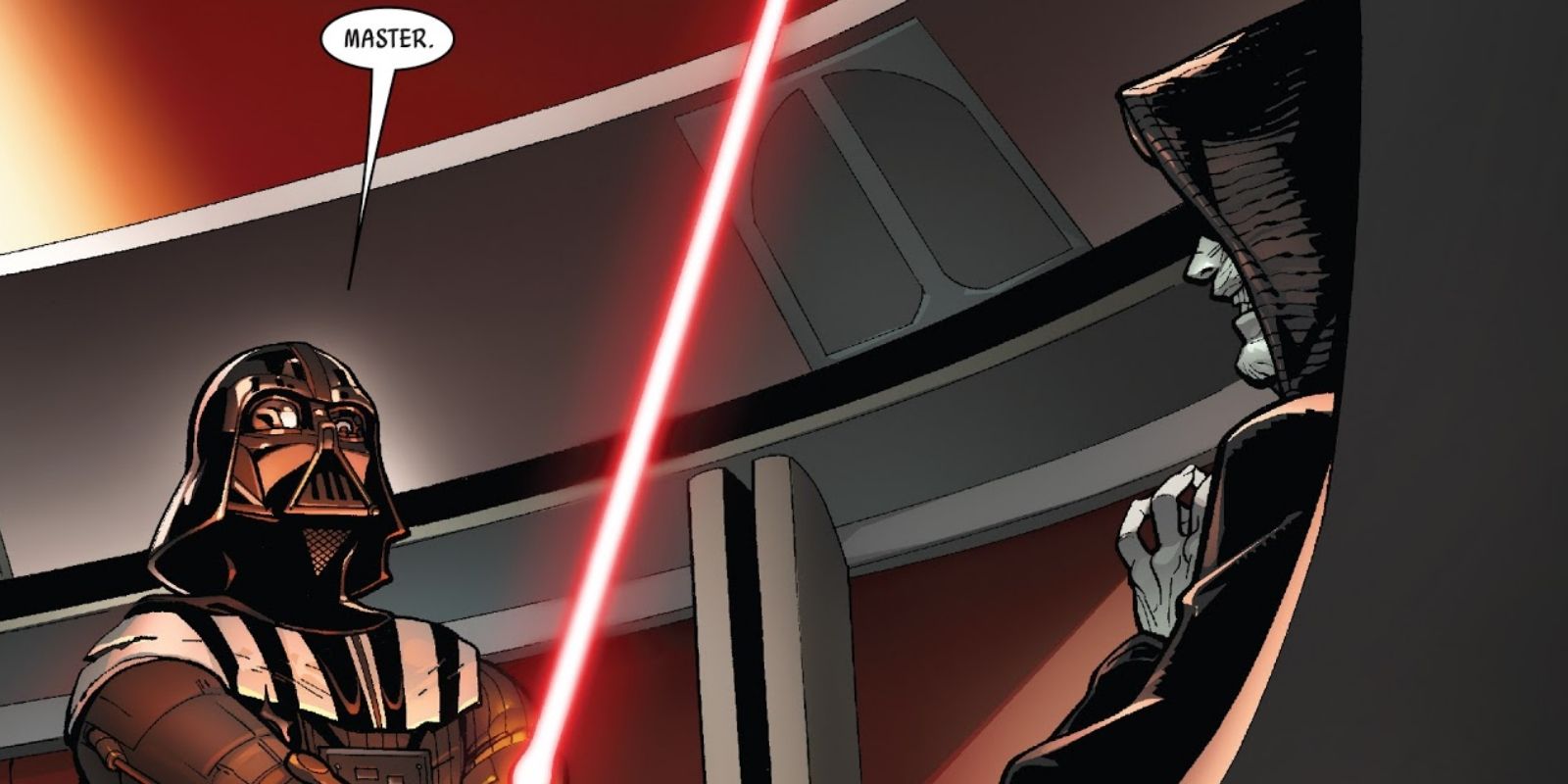Warning: contains SPOILERS for Star Wars: Darth Vader #5.
Four decades ago, Darth Vader exploded across movie screens in Star Wars: A New Hope, forever changing the face of onscreen villainy. Originally a terrifying specter with unstoppable abilities, audiences grew to know and understand his tangled path over the years. George Lucas explored his motivation a little during the Empire Strikes Back and Return of the Jedi and later based the prequel trilogy on his fall from grace and rise to infamy.
For some, the awkward plotting and dialogue of the first three episodes sullied his image, turning the once-menacing figure into a whiny Jedi brat. Others enjoyed the shaded political maneuvering and glimpse into the dark side' tempting pull. Thankfully, The Clone Wars animated series and Vader's ongoing Star Wars comic – as well as his appropriate appearance in Rogue One: A Star Wars Story – re-energized his, ahem, dark side. Marvel's Darth Vader #5, written by Charles Soule and illustrated by Giuseppe Camuncoli, digs into his rise to power, as well as the mysterious process of “bleeding” a Jedi lightsaber to its dark side user.
Vader's key Sith trial also unveils a haunting vision of how the Star Wars story could have turned out.
A Dark Quest Ends
As the saga began, a newly minted and mechanized Lord Vader experiences some dark side growing pangs. Upon waking to find his wife dead and himself contained within a new body, Emperor Palpatine calms his prize pupil, sending him on his first true Sith task: stealing and bleeding the lightsaber of a Jedi Knight. After considerable searching, Vader discovers a survivor from the Force-exterminating Order 66, Jedi Master Kirak Infil’a.
He tracks down Infil'a, who’s been on a Barash, an imposed Jedi exile of sorts, on a distant moon. The two engage in a brief but lopsided duel, with the older and more experienced Force wielder triumphing and leaving Vader for dead (this rarely works out). The fresh-cut dark sider repairs his mechanical parts with some droid debris and tracks down the Jedi before he leaves the planet. Exploiting his opponent's weaknesses – namely his desire to protect innocent lives – Vader defeats kills Infil’a, floods much of the moon, and acquires the fruits of his quest, the lightsaber hilt and its kyber crystal.
Upon his return to the ship, he finds a message from the Emperor. Palpatine’s programmed the navigator droid to take his young apprentice to Mustafar, the very place of his near-death at the hands of Obi-Wan Kenobi. Apparently, the lava planet also holds a dark side focal point where Vader can draw upon extra energy to bleed the crystal, bending it to his will. Even in this sinister place, though, Vader struggles with his newfound path.
One Last Chance for Redemption?
Arriving on Mustafar, Vader’s instinct guides him near the spot that Obi-Wan left him for dead in Revenge of the Sith. Following the dark side deeper into a cave, he disassembles the blade and sets to corrupting the crystal. Even with his considerable, burgeoning abilities and the twisted energies of the planet, the light side crystal proves formidable. It repels his first attempt, flinging him across the room, before offering Vader what could be considered his last temptation.
The positive energy of the crystal triggers a Force vision. In it, Vader finds himself unable to complete his task and corrupt the lightsaber. Instead, it triggers a swell of regret inside him. He flies to Coruscant, revealing the still-green blade to the Emperor and his intention to remain on the light side. The two duel, and Vader cuts down his would-be master. Assuming the hallucination was an alternative future, it suggests that a redeemed Anakin could have overpowered Palpatine at his peak. It’s also a haunting reminder of an alternative path for the Chosen One saga. Could Vader have truly brought balance to the Force, halting the Empire in its tracks?
It's conceivable. Following the Emperor's death in Return of the Jedi, the regime fragmented and fell, in part because of the Rebellion's growing strength and Imperial infighting. During the Darth Vader comic, though, the Empire was recently established and the Death Star was decades from completion. Without Palpatine, it’s possible the bottom would have fallen out or, at least, the totalitarian government would have floundered, altering the course of events in the galaxy.
In the comic, though, Vader seeks out Kenobi after killing the Emperor and submits himself for execution. His former friend, who once left him to die, spares the somewhat absolved Jedi. Yet, as striking as the vision is, everyone knows how Star Wars really plays out.
How Darth Vader Was Forged
Despite being shown a path of salvation, Vader accepts his new, darker path. The former Jedi views himself as irredeemable – a somewhat reasonable conclusion after the betrayal and mass-murder in his recent past. He refocuses his dark side energy and conjures Mustafar’s energy. As he battles against the crystal and through his painful history, the lava explodes dramatically around him, before finally Infil’a’s kyber crystal relents to his Sith might.
Vader rises from the ashes of his failure on Mustafar as a true servant of the dark side. Gifted with a new clarity of thought, he flies straight to Coruscant and shows off his red blade to Palpatine – who, in spite of the Force-smashed Imperial guards beside him, beams with twisted pleasure. Now, Anakin Skywalker’s journey betrayal of the Jedi is complete, and the man old Ben Kenobi once called a friend is figuratively dead.
–
Darth Vader #5 exposes the raw nerve of the future right hand of the Emperor and further implicates him in his own path. Rather than feeding into a wishy-washy vision of Vader, Soule gives him a sympathetic but damning final turn, where Anakin had one final chance to embrace the light and chooses not to. The Sith Lord's early days should also prove most illuminating and somewhat redemptive for fans of the galaxy’s greatest villain who felt he'd lost his onyx luster.
By exploring his weakest point, when he doubts his own choices and abilities (much like his grandson in The Force Awakens), Soule highlights the conflict still residing Anakin Skywalker. Rather than a desire for control or conquest, it's loss and self-loathing that motivate him. To absolve his sins, in essence, he embraces them in totality.
If Darth Vader #5 is an indication of the uncompromising series to come, we’re looking forward to more.
Next: Star Wars Comic Details Phasma’s Escape From Starkiller
Darth Vader #5 is currently available.




